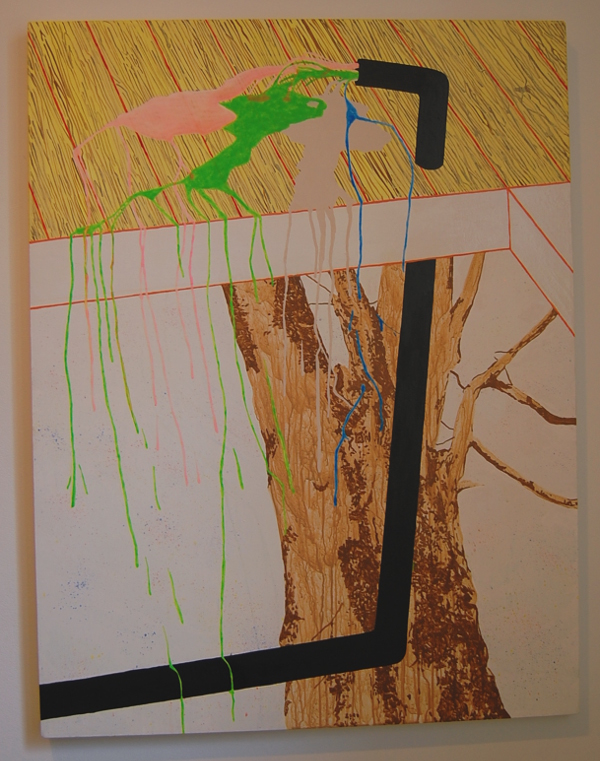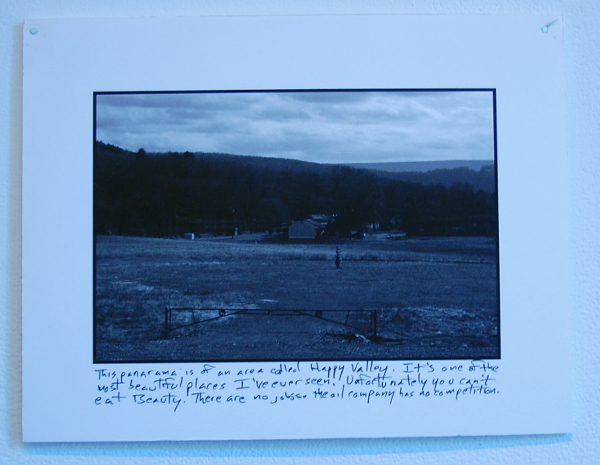
Napoleon gleans informative, environmental observations from three artists
At Napoleon, three artists toe the line between the destructive and the creative, the passive and the active in “Gleaners // Informers.” While most of these so-called ‘artist-citizens’ are not explicitly political or gushingly idealistic, they lift bits of their surroundings and disseminate them to the audience in an informative, almost documentary fashion. Curated and further analyzed by Liza Coviello in the gallery pamphlet, Brian Spies, Mauro Zamora and Heather Riley present shots, shapes and forms that, although seemingly disconnected, share many of the subtle sentiments found in artistic observation and presentation. Nature is the clearest point of divergence and the artists all seem to long for something else in the face of what they find.
Heather Riley gleans her starting point by utilizing found pieces of wood in compositions that hearken back mostly to the appearance of the material itself. Although we often view it as a material for furniture, art or architecture, wood is very literally the remains of deceased plants. Riley’s images, then, are very much like a eulogy for both the trees and the environment that development and industry continually seem to overtake. Instead of emphasizing the act of deforestation or even the life of a single tree, the artist explores the intricate and sensual patterns of the wood grain, accentuating them with lines of pencil, paint, thread, and even a nail or two. The forms are at times reminiscent of continents, landscapes, or beams of light, but at the works’ core is nothing but the material itself. Riley offers us the most humble of starting points, and beckons us to perhaps meditate on what we find, not necessarily proselytize.
Mauro Zamora, “broke grid.”
The paintings of Mauro Zamora also remark upon trees, although his depictions place them in what appear to be physical locations. These gnarled snags extend upward from oily ponds, amidst broken, leaky pipes, and behind the geometric mesh silhouettes of chain link fences. While the bare trunks and branches imply lifelessness, the rest of these canvases flow and move with textures and patterns. The natural here seems present but stagnant, while the human structures stand tall and arrogant. The most active patterns are splashed with harsh, synthetic colors and the beautiful twists of wooden forms similar to those that Riley uplifts fade into the background. All the while, the dominance of steel and a need for speed lurch ever closer…
Brian Spies, “Can’t Find My Way Home 2.”
Brian Spies presents black-and-white photographs that would seem more matter-of-fact than anything in the show, if it were not for his titles of brief captions. Once again, plants (and a fallen tree) are featured prominently in his compositions. In “Can’t Find My Way Home 2,” Spies admits that the location called Happy Valley is one of the most beautiful places he has ever seen. He grieves his inability to ‘eat beauty’ and, in a sense, join it as a part of himself; you are what you eat. Instead he ends the musing by jarringly noting the scarcity of jobs and lack of competition that oil companies encounter. The tiny structures in the distance and the locked gate before the treeline suddenly become less rustic and more intrusive to the scene. In our time, this area will never be untouched wilderness. The only potential fate the Happy Valley may come to find is an oil pipeline, and like beauty, you also can’t eat oil.
Merely capturing and informing, these three artists manage to piece together an exhibit that is emotionally charged and aesthetically precise. While the subtext of environmental concern seems quite potent, there is very little actual profession of opinion or action in the show. That responsibility belongs to all of us.
Napoleon is located at 319 North 11th St., 2L on the second floor, Philadelphia; [email protected]; napoleonnapoleon.com.
Recent Content
-
Artsarticle ·
-
Artsarticle ·
-
Artsarticle ·



